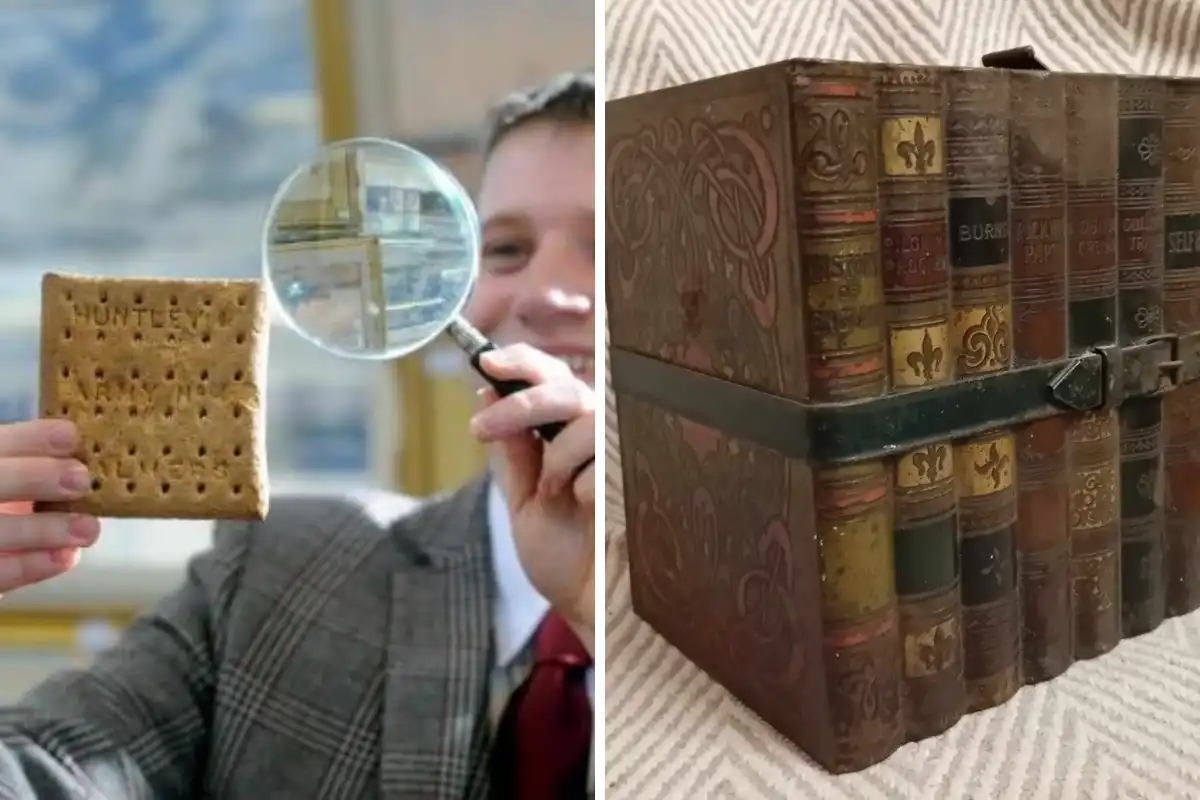History buff shows off 100-year-old Huntley and Palmers biscuit from World War One
Thomas Macey, a local history buff, has a vast collection of Huntley and Palmer biscuit tins, including a 100-year-old biscuit.
Last week, I had the unique opportunity to chat with a renowned local history enthusiast in Reading. Thomas Macey, also known as Mr. Jackson, has gained a reputation for his extensive knowledge and collection of artifacts from the now-closed Jacksons Department store. His passion for the city's rich history is evident in his vast array of antiques, many of which were generously given to him by the Jackson family.
Among his most prized possessions are his collection of Huntley and Palmer biscuit tins, a testament to his fascination with the city's heritage. One particularly rare item in his collection is a 100-year-old biscuit that made its way to and from World War One. This biscuit, produced at the Huntley and Palmers biscuit factory in Reading, was intended as rations for soldiers in France. According to Mr. Macey, the biscuits were so unpalatable that many were returned from the frontline.
In addition to his collection of biscuit tins, Mr. Macey shared with me a remarkable collector's item - a glass biscuit barrel with a metal lid, engraved with the Huntley and Palmer's logo. He explained that this item was particularly rare and valuable, especially in comparison to the more common biscuit tins from shops.
During our conversation, Mr. Macey also delved into the history of Huntley and Palmers and their significant role in the invention of the biscuit tin. He highlighted the company's innovation in response to the issue of biscuits becoming soggy and inedible when sold in paper, leading to the invention of the biscuit tin. The company operated in two sites in Reading, with one factory dedicated to biscuit production and the other to decorative biscuit tins.
Among his extensive collection, Mr. Macey also possesses a tin designed to resemble a collection of books, adding to the diversity and historical significance of his artifacts. According to the Reading Museum, Huntley & Palmers originated as a small bakery in 1822 and grew to become the largest biscuit manufacturer in the world by 1900, employing over 5,000 people.
In conclusion, my conversation with Mr. Macey provided a fascinating insight into the history of Reading and the significant role that Huntley and Palmers played in the development of biscuit manufacturing. His collection of artifacts serves as a testament to his passion for the city's heritage, and his knowledge and enthusiasm were truly inspiring.












Comments on History buff shows off 100-year-old Huntley and Palmers biscuit from World War One